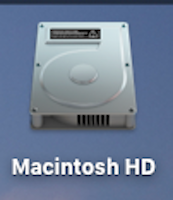S K Acharya the Visionary!
A motor vessel with more than 50 container cargo consignment made a landmark sail from Haldia Dock in West Bengal to the Inland Waterways Authority of India (IWAI) terminal at Pandu in Guwahati in Assam on 04 November 2019. The 1,425 - kilometre long voyage will take twelve to fifteen days. This is the first ever containerised cargo movement in the inland water transport route.
Earlier, on March 2019, three luxury passenger vessels
successfully undertook four voyages carrying about 300 tourists, mostly foreign nationals. Of these, two of those voyages were undertaken between Kolkata and Guwahati that sailed through the river system of Bangladesh, including the stretches where dredging is on, as per a report in The Economic Times.
Such movement of cargo as well as luxury cruise vessels are destined to boost the northeastern region’s industrial development by opening up of this alternative route for transportation of raw material and finished goods as well as give a fillip to the tourism industry.
Right from the ancient times, medieval period until the British Raj, waterways was always considered to be the lifeline of transportation. However, since1947 the focus was primarily on the railways and later the roadways. In the milieu, the potential to capitalise on India’s inland waterways had been completely forgotten. Many attributes the reason behind this could be due to a probable strong lobby by the surface transport operators as developing the waterways would have eaten up significant chunk of their business.
To put it in perspective, a single 2,000 ton vessel is equivalent to 40 wagons of goods train or can replace 125 trucks (16 or 18 wheeler type) on the road with 16 metric ton of capacity each. Further, the waterways low operational cost as compared to the surface transport, would mean significant benefit to the landlocked northeast region of India.
Earlier in November 2019, with the Bangladesh Prime Minister Sheikh Hasina’s visit to New Delhi, the waterways
For a while, news like these flooding the media scape has been causing ripples around the world. The fact remains is that the man who had thought out-of-the-box and researched on the idea of connecting the Brahmaputra with the Ganges more than fifty years ago was none other than the late Salil Krishna Acharya.
In the 1950s, under the then B P Chalia-led Assam
Accordingly, he had completed an exhaustive study and prepared a blueprint that was endorsed by the state government, which in turn referred it to the central government for approval. However, during that point of time though the central government felt the project superb, but had to put in cold storage due to an acute financial crisis.
Until his demise in 1994, he was deeply involved in the establishment of a Centre for Ethno Social Studies (CESS) in
Calcutta. His scope of research under the Applied Economics Division of CESS was ‘Problems and Prospects of Mutual Economic Cooperation Between Bangladesh and Eastern and North Eastern States of India”.
Infact, phrases like 'Look East', 'Act East', etc which has now become quite a buzz, are actually offshoots of his research works as I had seen such similar words in his numerous manuscripts including the original blueprint as well as his frequent verbal usage of the same. Few MPs of that era and people familiar with his work will vouch for this claim.
 |
| S K Acharya with spouse |
Just after his demise, a publication house came forward for his papers/manuscripts which were given, but was never returned. How I regret for not having pursued for the return of all his valuable papers. And the absence of Internet and computers during those days, all his hard works could not be digitized or archived though.
Amongst the several media that reported about his demise, some newspapers mentioned briefly about his work that should stand as a testimony to his contribution. An article in The Assam Tribune, dated, 22 November 1994 mentions among others - "He (Prof Salil Krishna Acharya) spent a lot of his time and intellectual energy in the sixties pursuing his project of a Ganga canal which he thought would be the fulcrum of economic development of the North Eastern region including Bangladesh. The project is still talked about in many circles and might materialise one day.”
Another report in The Shillong Times, dated, 18 November 1994 states, - "Mr Acharya, who was an intellectual, writer and innovator, was the first to have mooted the idea of joining Brahmaputra and Ganges for solving the eastern region's water management problems. The idea was seriously considered by the centre but financial constraints came in the way."
Towards the end of this article, a couple of news clips dating way back to November 1994 has been attached.
 |
| IWAI Vice Chairman |
And yes, whenever any news related to Indo - Bangladesh trade and vessels moving to and fro between the Gangetic network and Brahmaputra, it only brings loads of memories of this brilliant intellectual who was a true visionary but sadly, his name has faded to oblivion. However, when this was brought to the notice of the IWAI, the Vice Chairman, Mr. Pravir Pandey assured that Prof Acharya’s valuable contribution will be duly acknowledged.
 |
| The Shillong Times. dated, 18-11-2019 |
 |
| The Assam Tribune, dated, 22-11-1994 |
































